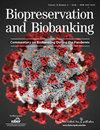Effects of Osmotic Stress and Cryoprotectant Toxicity on Mouse Oocyte Fertilization and Subsequent Embryonic Development In Vitro
引用次数: 29
Abstract
Supplementation of cryoprotectant agent (CPA) into freezing solution causes osmotic change and this change together with toxicity of CPA may damage the oocytes before freezing. The objectives of the present study were to evaluate the tolerance of mouse oocytes to osmotic changes and to compare the toxicity of the permeable CPAs. Denuded mouse oocytes were exposed to (1) 0.5 M, 1.0 M, or 2.0 M sucrose in HEPES-buffered modified human tubal fluid (mHTF), respectively, for 3 min at the room temperature; exposed to (2) either 1.0 M or 2.0 M ethylene glycol (EG), 1,2-propanediol (PROH), dimethyl sulfoxide (Me2SO) and glycerol in HEPES-buffered mHTF for 3 min at room temperature, respectively. Following exposure, the oocytes were inseminated by in vitro fertilization (IVF), and the zygotes were further cultured to assess embryonic development in vitro. Additional analyses included morphologic evaluation of meiotic spindle organization and chromosome alignment as well as aneuploidy. Exposure to 2.0 M sucrose sig...渗透应激和冷冻保护剂毒性对小鼠卵母细胞体外受精和胚胎发育的影响
在冷冻液中添加冷冻保护剂(CPA)会引起渗透性变化,这种变化与CPA的毒性一起可能在冷冻前对卵母细胞造成损伤。本研究的目的是评估小鼠卵母细胞对渗透性变化的耐受性,并比较渗透性cpa的毒性。将剥去的小鼠卵母细胞分别暴露于(1)0.5 M、1.0 M或2.0 M的hepes缓冲改性人输卵管液(mHTF)中的蔗糖中,在室温下浸泡3分钟;在hepes缓冲的mHTF中分别暴露于1.0 M或2.0 M乙二醇(EG)、1,2-丙二醇(PROH)、二甲亚砜(Me2SO)和甘油中3分钟。暴露后,通过体外受精(IVF)对卵母细胞进行人工授精,并进一步培养受精卵以评估体外胚胎发育。其他分析包括减数分裂纺锤体组织和染色体排列以及非整倍体的形态学评价。暴露在2.0 M蔗糖下…
本文章由计算机程序翻译,如有差异,请以英文原文为准。
求助全文
约1分钟内获得全文
求助全文

 求助内容:
求助内容: 应助结果提醒方式:
应助结果提醒方式:


